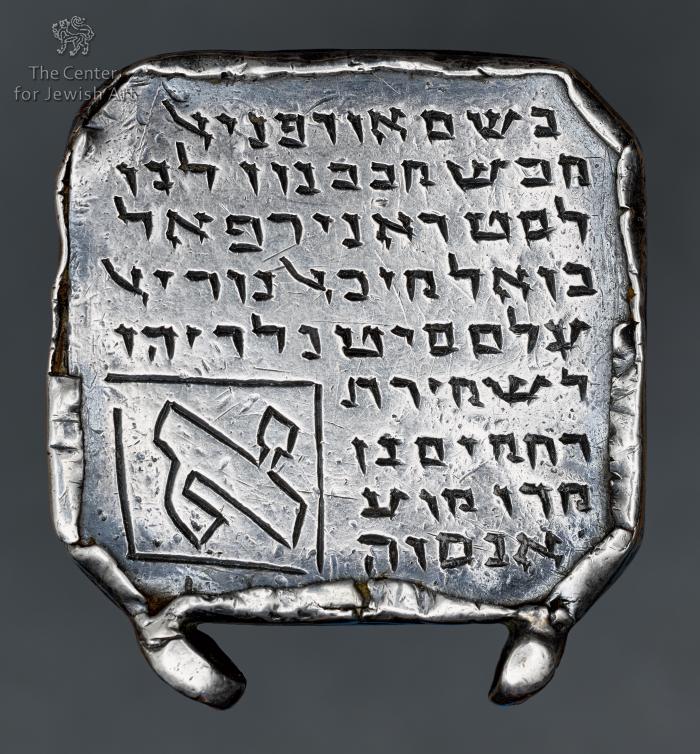Obj. ID: 35855 Amulet, Iraqi Kurdistan, circa 1900

sub-set tree:
The following description was prepared by William Gross:
From earliest times, man has tried to protect himself from misfortune by the use of objects which he considered holy or otherwise (e.g., magically) potent. Amulets and talismans are items generally worn around the neck or wrist, carried in a pocket or purse or hung on a wall. They are meant to protect or aid those who carried or wore them. The Hebrew word for amulet, kame‘a, has the root meaning "to bind". Jewish amulets are usually comprised of texts (either letters or graphic symbols) that are inscribed on some sort of material; some may also contain plant matter or precious stones. The texts of amulets usually include holy names that are believed to have the ability to affect reality, along with incantations summoning angels or other magical powers. For the most part, an amulet has a specific purpose: to ease childbirth, facilitate recovery from illness, improve one’s livelihood, and so on, but in the modern world many are also made for general protection.
This amulet shape of an almost square form with clipped corners is among the most common for Kurdistani talismans. They were made for numerous contexts, including the protection of birthing mothers and their children, as is documented in a famous picture of a child from Sandor, in Iraqi Kurdistan, wearing such an amulet on a chain over her shoulder. This shape also is found in smaller sizes, and all the sorts are often found, not only with inscriptions, but with designs of magic squares of amuletic abbreviations, the Magen David and the hamsa.
This is an unusual form constructed from two silver sheets in a silver frame and apparently filled in between with pitch. In addition to the amuletic inscriptions there is an engraved image of the hamsa. The inscriptions consis largely of the names of various angels and forms for the names of God. These small amulets, which are also known in larger sizes, were worn from chains. This amulet is for a male, Rachamim ben Maromua. The hollow lettered Aleph in a square found on the back is an element found on several Iraqi amulets. The letters in the square with the hamsa are not clear in respect to their meaning.
The hamsa is arguably the most popular form of amulet against the Evil Eye and is used in a large number of countries in the Islamic world. Probably originating in Moslem Spain of the 12th or 13th century, it crossed the sea to Morocco with the expulsion of 1492 and spread across North Africa to the Middle and Far East.
Inscription: Rachamim ben Maromua; Ankatam Pastam......



